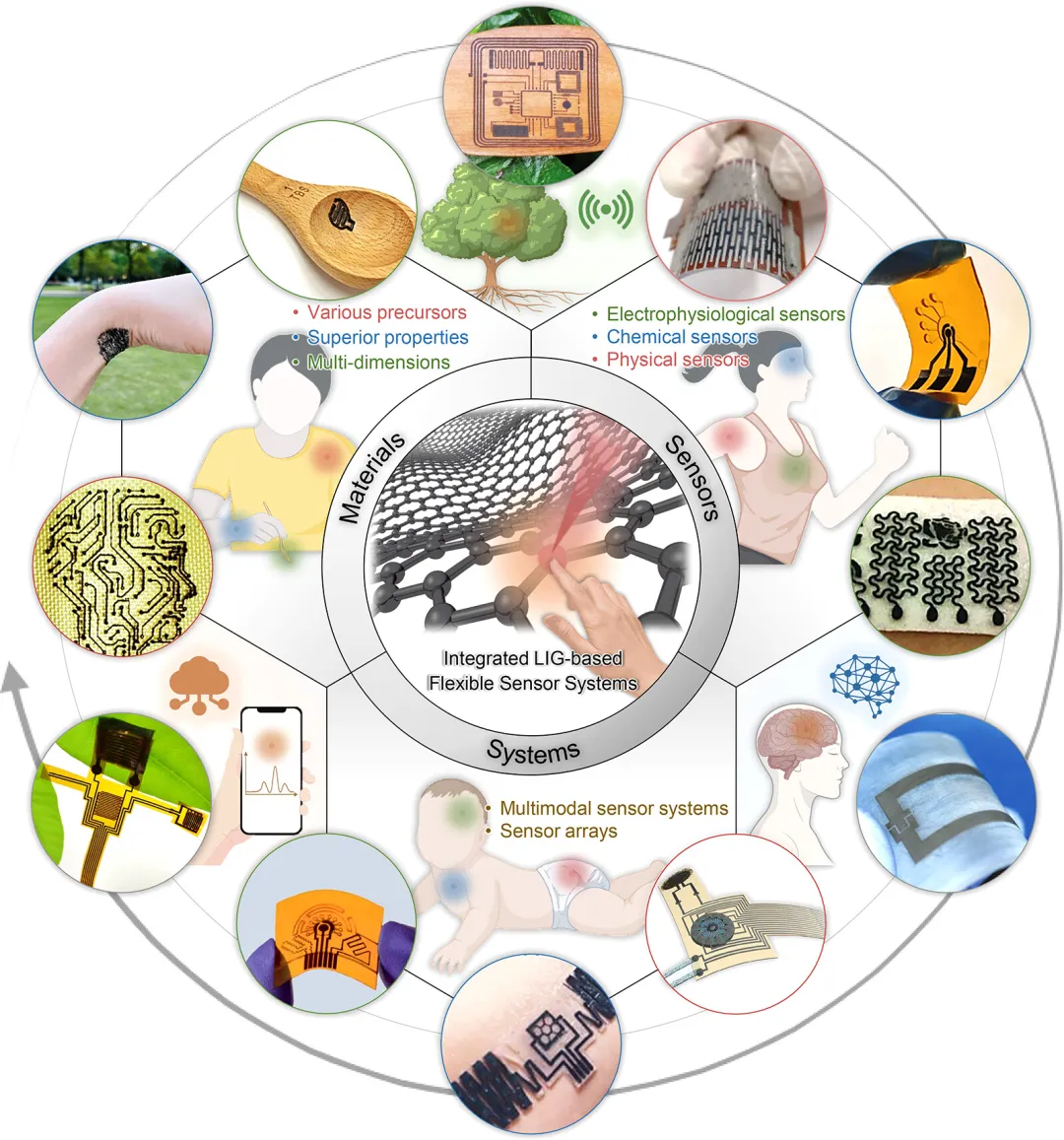Graphene “Skin”! ACS Nano
Recently, researchers including Liu Jingquan from Shanghai Jiao Tong University, Cuifang Kuang from Zhejiang University, and Xu Kaichen reviewed the advancements in integrated multifunctional laser-induced graphene (LIG)-based flexible sensor systems.
The growing demand for healthcare and human-machine interfaces requires next-generation multifunctional integrated sensor systems with simple manufacturing processes and reliable performance. Laser-induced graphene (LIG) plays a crucial role in developing multifunctional skin-like flexible or stretchable sensor systems due to its highly tunable physical and chemical properties. This progress report provides an in-depth overview of the latest advancements in LIG-based technologies for flexible sensor applications.
First, the advantages of LIG technology are emphasized, particularly as building blocks for flexible sensors, followed by a description of various manufacturing methods for LIG and its variants. The focus then shifts to various types of flexible sensors based on LIG, including physical sensors, chemical sensors, and electrophysiological sensors, detailing the mechanisms and advantages of LIG in these scenarios.
Additionally, representative examples of integrated sensor systems based on LIG are presented to showcase the capabilities of LIG technology in multifunctional applications. The report also discusses signal crosstalk issues and potential strategies to mitigate them. The integration of multifunctional LIG technology with other manufacturing strategies will provide high-performance integrated sensor systems for the next generation of skin electronics.

Reference: Kaichen Xu, Zimo Cai, Huayu Luo, Yuyao Lu, Chenliang Ding, Geng Yang, Lili Wang, Cuifang Kuang, Jingquan Liu, and Huayong Yang. Toward Integrated Multifunctional Laser-Induced Graphene-Based Skin-Like Flexible Sensor Systems. ACS Nano 2024, 18 (39), 26435-26476. DOI: 10.1021/acsnano.4c09062
Link to original article

